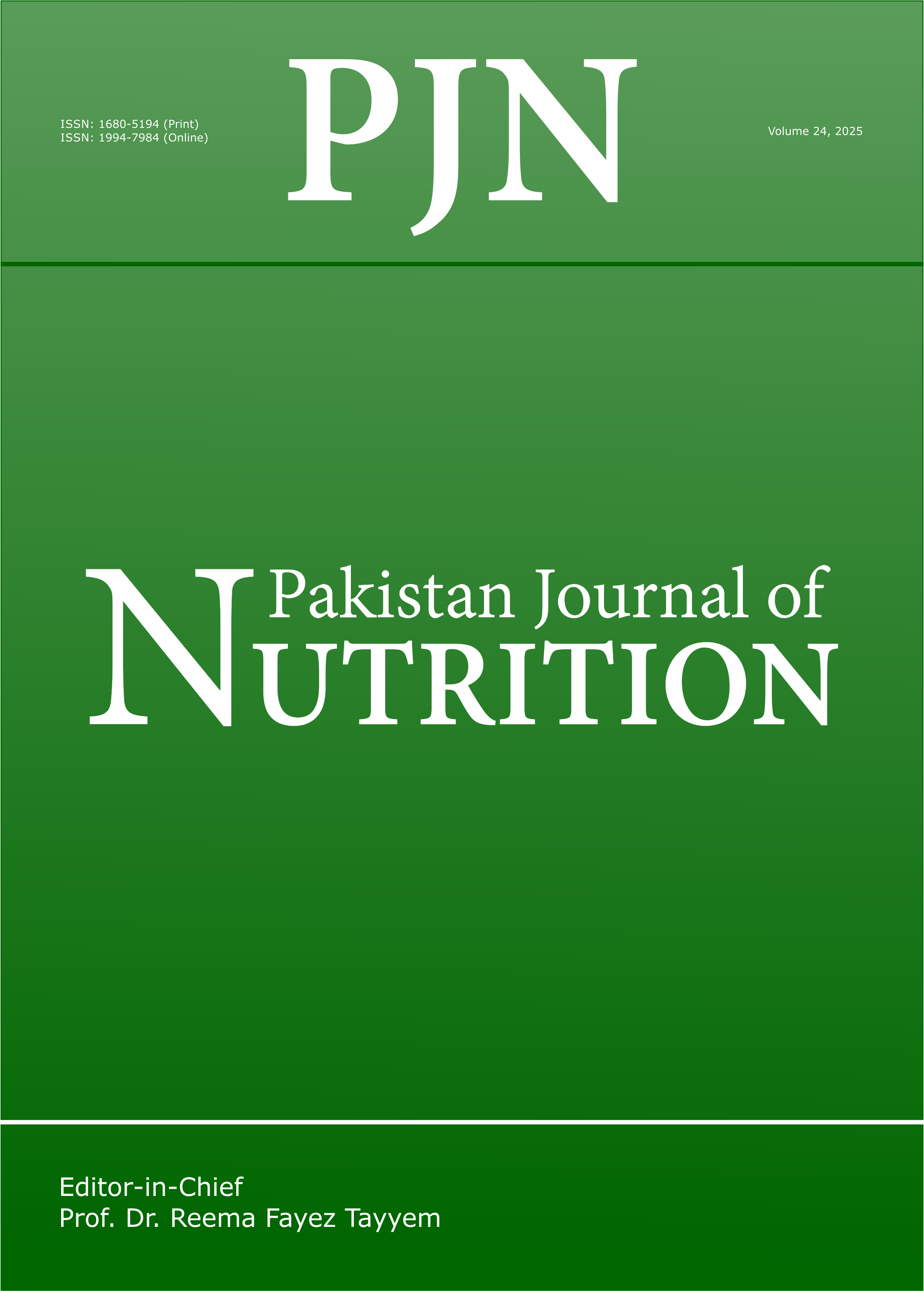Studies of Irvingia gabonensis Seed Kernels: Oil Technological Applications
DOI:
https://doi.org/10.3923/pjn.2009.151.157Keywords:
Irvingia gabonensis, lauric and myristic acids, margarine, proximate analysis, unconventional oilseedAbstract
Irvingia gabonensis seed kernels of two Congo Brazzaville localities (Ouesso and Sibiti) were analyzed for their main chemical composition. Studies were also conducted on properties of oil extracted from Irvingia gabonensis seed kernels and margarines. The following values were obtained for two seed kernels cultivars respectively: protein (8.33-8.71%), oil (34.28-73.82%), ash (2.06-3.8%) and carbohydrate (15.71-55%). Gas-liquid chromatography revealed that the major fatty acid was, C12:0 (36.6-39.37%), C14:0 (50.92-53.71%) and C16:0 (4.97-5.23%) in oil extracted from Irvingia gabonensis and in the margarines, there is C12:0 (13.7-14.5%), C14:0 (18.46-18.54%), C16:0 (18.81-19.3%) and C18:1n-9 (36.35%), the unsaturated fatty acids such as C16:1 (0.33-0.385%), C18:3n-3 (0.62-0.64%) and C22:1n-9 (0.35-0.38%) are present. The margarines thus manufactured can tolerate temperatures of crackling because their linolenic acid content is lower than 2%. The differential thermal analysis shows the existence of two processes; crystallization and fusion. Crystallization in oil is done between 2 and 2.5oC and between -3.88 and 5.13oC in the margarine on the other hand fusion is carried out at high temperatures between 30 and 40oC. The addition of thin oils to Irvingia gabonensis oil during the margarine manufacture causes: increase in the unsaturated fatty acid content which results in the displacement of the peaks into the low melting point. The small percentages in lauric acid indicate that these greasy substances can be stored for a long time without fearing deterioration due to oxidizing rancidity. The margarine based on Irvingia gabonensis oil is an alternative to the Trans fatty acids obtained during hydrogenation and other reactions used in margarinery.
Downloads
Published
Issue
Section
License
Copyright (c) 2009 Asian Network for Scientific Information

This work is licensed under a Creative Commons Attribution 4.0 International License.
This is an open access article distributed under the terms of the Creative Commons Attribution License, which permits unrestricted use, distribution and reproduction in any medium, provided the original author and source are credited.

